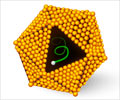“A liver tumor can be removed in many ways,” said Marquis Hart, MD. One of the ways of removal is now offered by doctors at UC San Diego Medical Center and Moores UCSD Cancer Center.
“A liver tumor can be removed in many ways,” said Marquis Hart, MD, transplant surgeon at UC San Diego Medical Center. And one of the ways of removal is now offered by doctors at UC San Diego Medical Center and Moores UCSD Cancer Center.
Christened ‘microwave ablation’, this treatment option is up-to-the-minute and minimally-invasive.“Patients at UC San Diego have a new option called ‘microwave ablation.’ Simply put, we zap and destroy liver tumors with heat derived from microwave energy. This is an important alternative, especially since the majority of liver cancers cannot be partially removed and not all patients are transplant candidates,” Hart added.
Current treatment options for liver cancer include transplantation, partial surgical removal of the liver, chemotherapy, radiation, or ablation—the destruction of abnormal tissue with heat from radiofrequency waves, high frequency ultrasound, freezing, or alcohol injection.
Now, microwave technology, offered by Covidien, removes the tumor with intense heat.
To perform the procedure, Hart accessed the tumor through the skin, or through a small laparoscopic port or open incision.
With ultrasound guidance or a computed tomography (CT) scan, the tumor is located and then pierced with a thin antenna, which emits microwaves.
Advertisement
“Microwave ablation causes the tumor to be quickly and precisely removed. If necessary, multiple tumors can be treated at the same time,” said Hart.
Advertisement
Apart from liver disease, microwave ablation has promising potential in the treatment of lung, kidney, and bone cancer.
Source-ANI
TAN














